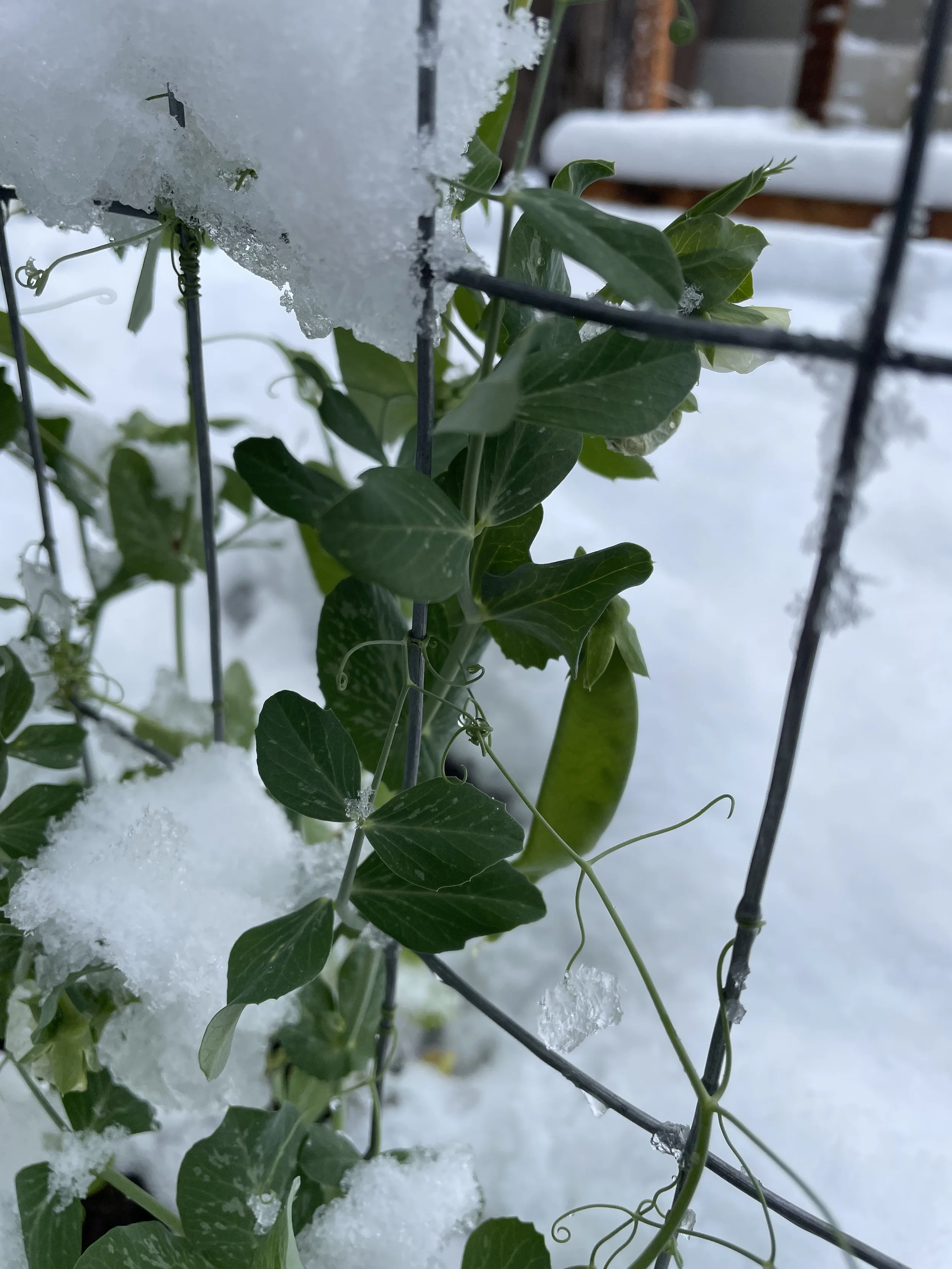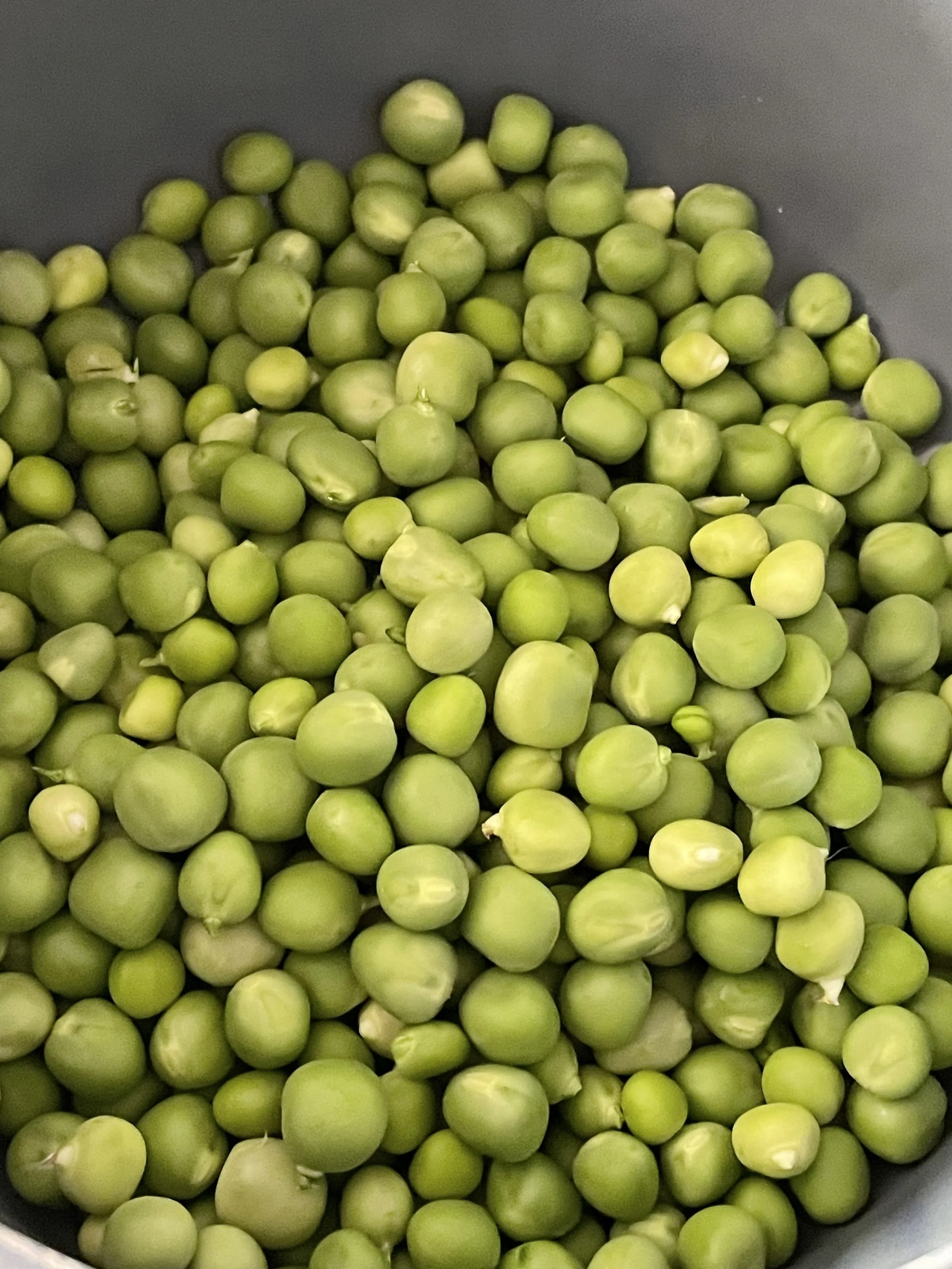Pea planting time!
Despite getting nearly a foot of snow two days ago, it’s time to plant peas and fava beans in our region! The excitement and anticipation of getting outside and planting something after 5 months of winter has been building over the past week as the snow accumulated.
There’s a long standing tradition in the Denver gardening community of planting peas on St. Patrick’s day. Mid/late March temperatures are ideal for getting both peas and fava beans planted; they are some of the few plants that can tolerate our erratic spring weather, and even thrive in a little bit of snow.
Peas should be direct sown. Some folks pre-soak their seeds to encourage earlier germination; in past experiments, we found little difference between pre-soaking them and sowing seeds directly out of the packet into the ground, so we do not pre-soak our seeds. If temps remain too cold, the seeds will effectively remain dormant until the right time; so we don’t worry about sowing them too early. To quote Jurassic Park, ‘life…uh finds a way.’
We grow several different types of peas; shelling, snap, and snow. Snap and snow peas can be enjoyed right out of the garden, husk and all. You can cook them or eat them raw; we love adding homegrown snow peas to a tasty stir fry or enjoying snap peas with homemade hummus. We frequently take snap peas on camping or backpacking trips since they keep relatively well on a trail for a day or two.
Shelling peas, on the other hand require a little more work; the fibrous husk must be removed to get to the juicy peas inside, but they are worth the work for the reward. We really love adding fresh peas to spring pasta dishes, spreads, and pestos. You can freeze shelling peas for a nearly indefinite amount of time; we tend to grow more shelling peas simply to have them on hand in the freezer year round.
Terrance shelling peas at a cabin we stayed at last summer.
Gorgeous shelled peas ready for the freezer.
Planting information:
Peas require 6-8 hours of direct sunlight per day; they do best in cooler weather.
Avoid planting peas (and all legumes) with alliums like onions and garlic.
Peas do not transplant well, so it’s best to direct sow to avoid root disturbance.
Plant at a depth of one inch and space seeds 2 inches apart; space rows 4 inches apart.
If not raining or snowing, water daily once flowers appear (less frequent watering prior to flower production is ok, but water consistently if it’s hot).
Peas require staking or trellising - even bush varieties require something to climb.
Our favorite pea varieties in no particular order are:
Green Arrow (Shelling) - Botanical Interests
Oregon Sugar pod II (Snow)- Botanical Interests/Renee’s
Sugar Sprint (Snap)- Seeds Trust
Maestro (Shelling) - Gurney’s
Golden Sweet (Snow) - Seed Saver’s Exchange
Sugar Magnolia (Snap) - Botanical Interests
The flowers from the last two varieties are also stunners, they really brighten up the garden in early spring. The shoots, flowers, and pods of edible pea plants are edible (*garden/sweet peas, which are grown for floral purposes are highly toxic, so be sure you’re growing an edible variety).
It’s fun to add the colorful flowers and gorgeous shoots to spring salads.
Once your pea plants have started to produce, harvest them frequently to encourage continued production. As noted above, peas prefer cooler weather, and do best from April-June in our region/growing zone. Peas can be sown again in late August for a fall crop.
Happy pea planting!






